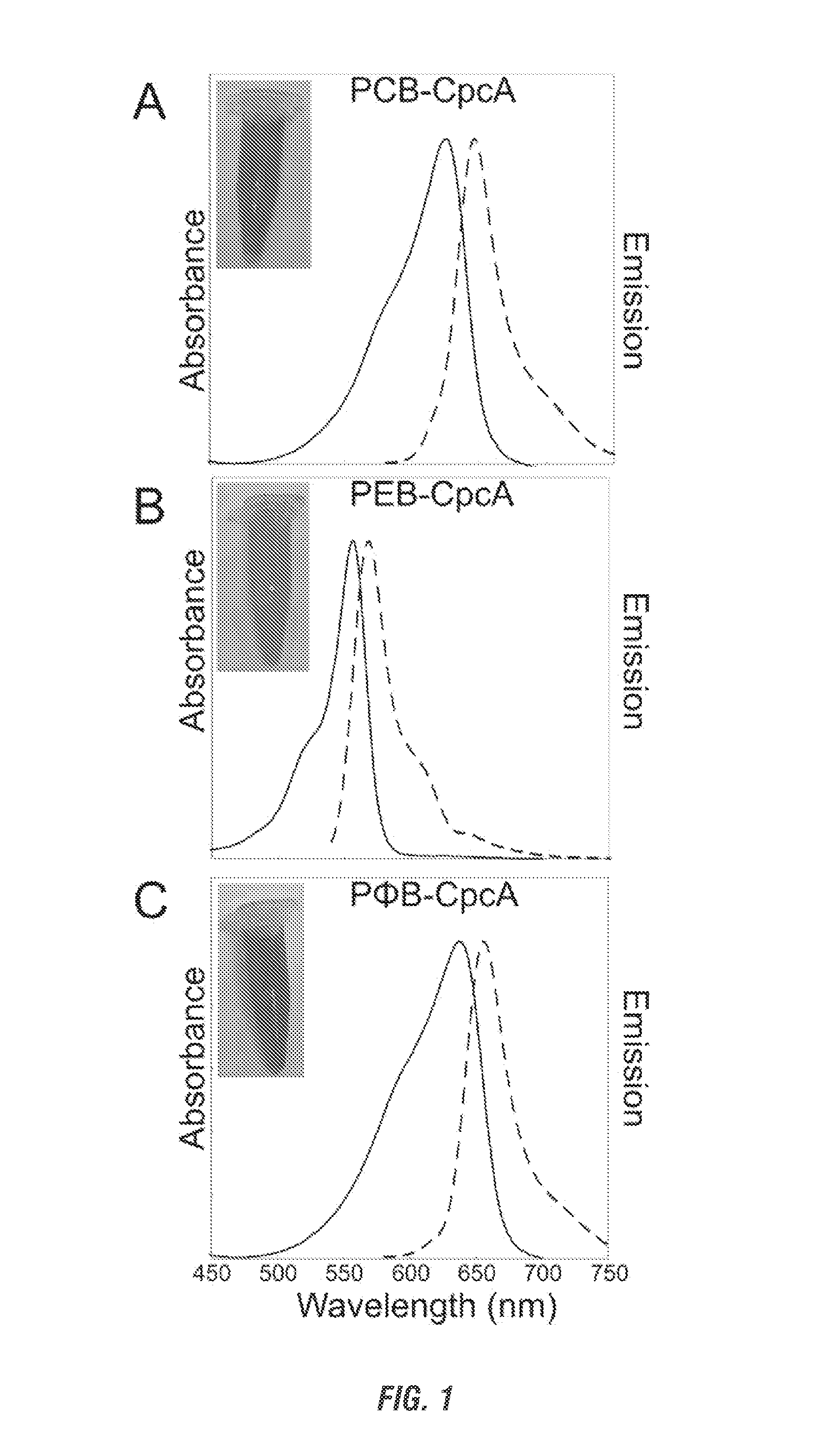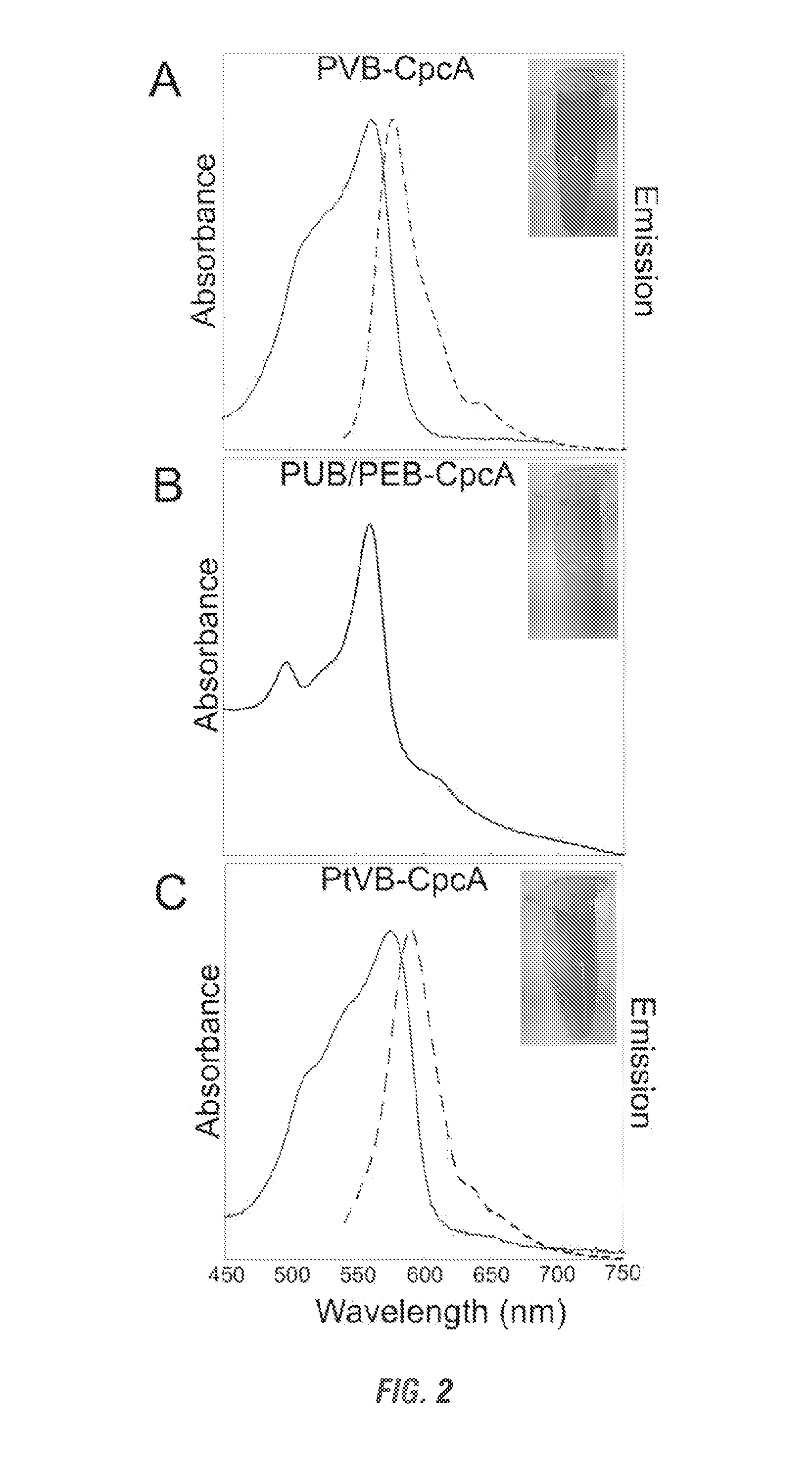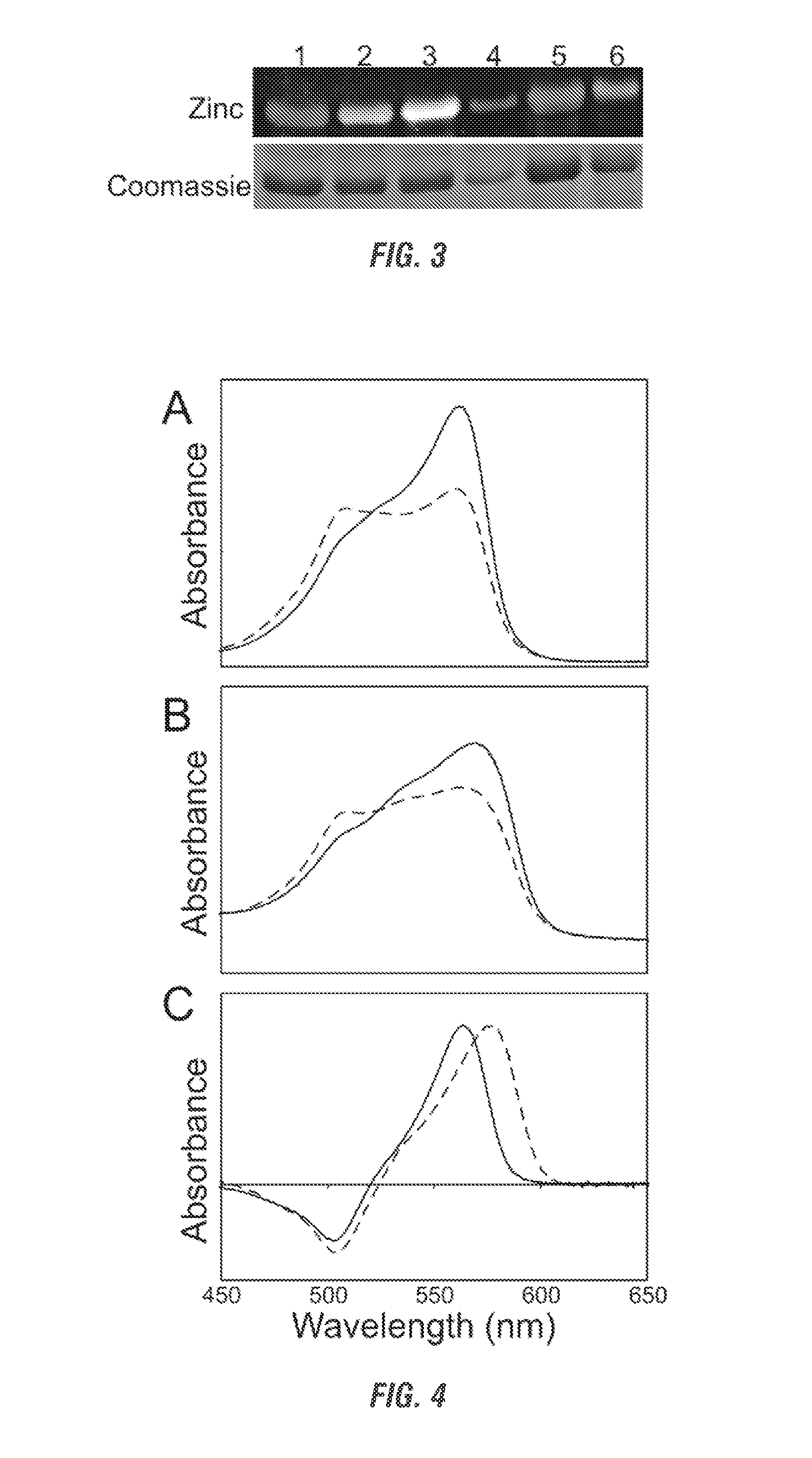Recombinant phycobiliproteins with enhanced fluorescence and photochemical properties
a technology of phycobiliproteins and fluorescence, applied in the field of recombinant phycobiliproteins with enhanced fluorescence and photochemical properties, to achieve the effect of chromophorylation efficiency and specificity
- Summary
- Abstract
- Description
- Claims
- Application Information
AI Technical Summary
Benefits of technology
Problems solved by technology
Method used
Image
Examples
example 1
Attachment of Non-Cognate Chromophores to CpcA of Synechocystis sp. Strain PCC 6803 by Heterologous Expression in Escherichia coli
[0258]Cyanobacteria have developed a number of pigmented proteins to collect light energy optimally for photosynthesis. Most utilize finely tuned antennae known as phycobilisomes, which are supramolecular structures composed of both chromophorylated and non-chromophorylated proteins. The chromophorylated components, i.e., the phycobiliproteins, carry covalently bound, linear tetrapyrroles (phycobilins) that are responsible for the light-harvesting properties of these proteins. Only four bilins are known to be incorporated into cyanobacterial phycobiliproteins: phycocyanobilin (PCB) and phycoerythrobilin (PEB) and their respective Δ5-to-Δ2 double-bond isomers, phycoviolobilin (PVB) and phycourobilin (PUB) (see Table 1). In addition to its role in light harvesting, PCB also has a role in light sensing, as it has been found to be the chromophore attached to...
example 2
Effects of Modified Phycobilin Biosynthesis in the Cyanobacterium Synechococcus sp. Strain PCC 7002
[0287]Most cyanobacteria employ light-harvesting antennae known as phycobilisomes (PBS) to collect light that is not efficiently absorbed by chlorophyll (Chl) for photosynthesis. PBS are, multi-subunit, supramolecular structures composed of both pigmented phycobiliproteins (PBPs) and usually non-pigmented linker proteins. Four different linear tetrapyrrole chromophores (bilins): phycocyanobilin (PCB), phycoerythrobilin (PEB), phycoviolobilin (PVB), and phycourobilin (PUB) can be bound to cyanobacterial PBPs. These four bilins are isomers, which differ only in the number of conjugated double bonds that form the chromophore, and all are derived from a common biosynthetic precursor, biliverdin IXα Biliverdin IXα is synthesized from heme by oxidative cleavage of a methine bridge of heme by the enzyme heme oxygenase. PCB:ferredoxin oxidoreductase, PcyA, uses four electrons from reduced ferr...
example 3
Use of Exogenously Added Biliverdin to Circumvent the Need for Oxygen for the Formation of the Linear Tetrapyrrole Chromophore of a Recombinant Phycobiliprotein
[0315]Recombinant Escherichia coli cells co-expressing five genes, hox1, pebS, CpcA, CpcE and CpcF produce the highly fluorescent holo phycobiliprotein subunit HT-CpcA-PEB when grown aerobically and can be readily visualized using fluorescence microscopy (FIG. 15A) or examined using flow cytometry (FIG. 16, red line). However when the same culture is grown anoxically, the cells fail to produce any fluorescent protein and are not able to be detected using fluorescence microscopy (FIG. 15B) and have only background levels of fluorescence when examined using flow cytometry (FIG. 16, black line). This is due to an inability of the cells to perform the first step in the formation of the linear tetrapyrrole chromophore, specifically the opening of the heme ring by the enzyme heme oxygenase which requires oxygen. Commonly used fluor...
PUM
| Property | Measurement | Unit |
|---|---|---|
| Volume | aaaaa | aaaaa |
| Volume | aaaaa | aaaaa |
| Volume | aaaaa | aaaaa |
Abstract
Description
Claims
Application Information
 Login to View More
Login to View More - R&D
- Intellectual Property
- Life Sciences
- Materials
- Tech Scout
- Unparalleled Data Quality
- Higher Quality Content
- 60% Fewer Hallucinations
Browse by: Latest US Patents, China's latest patents, Technical Efficacy Thesaurus, Application Domain, Technology Topic, Popular Technical Reports.
© 2025 PatSnap. All rights reserved.Legal|Privacy policy|Modern Slavery Act Transparency Statement|Sitemap|About US| Contact US: help@patsnap.com



